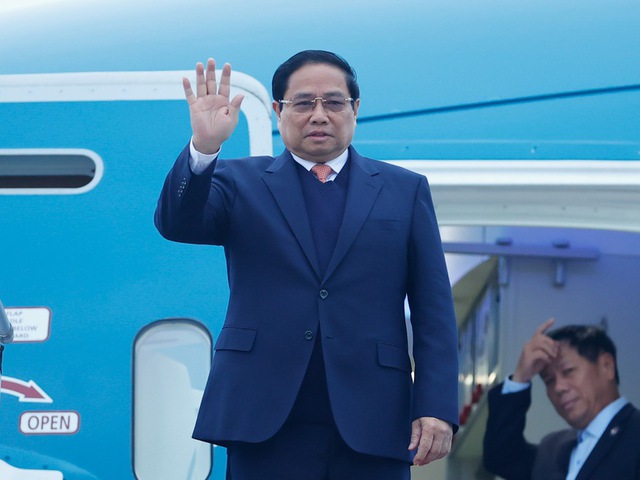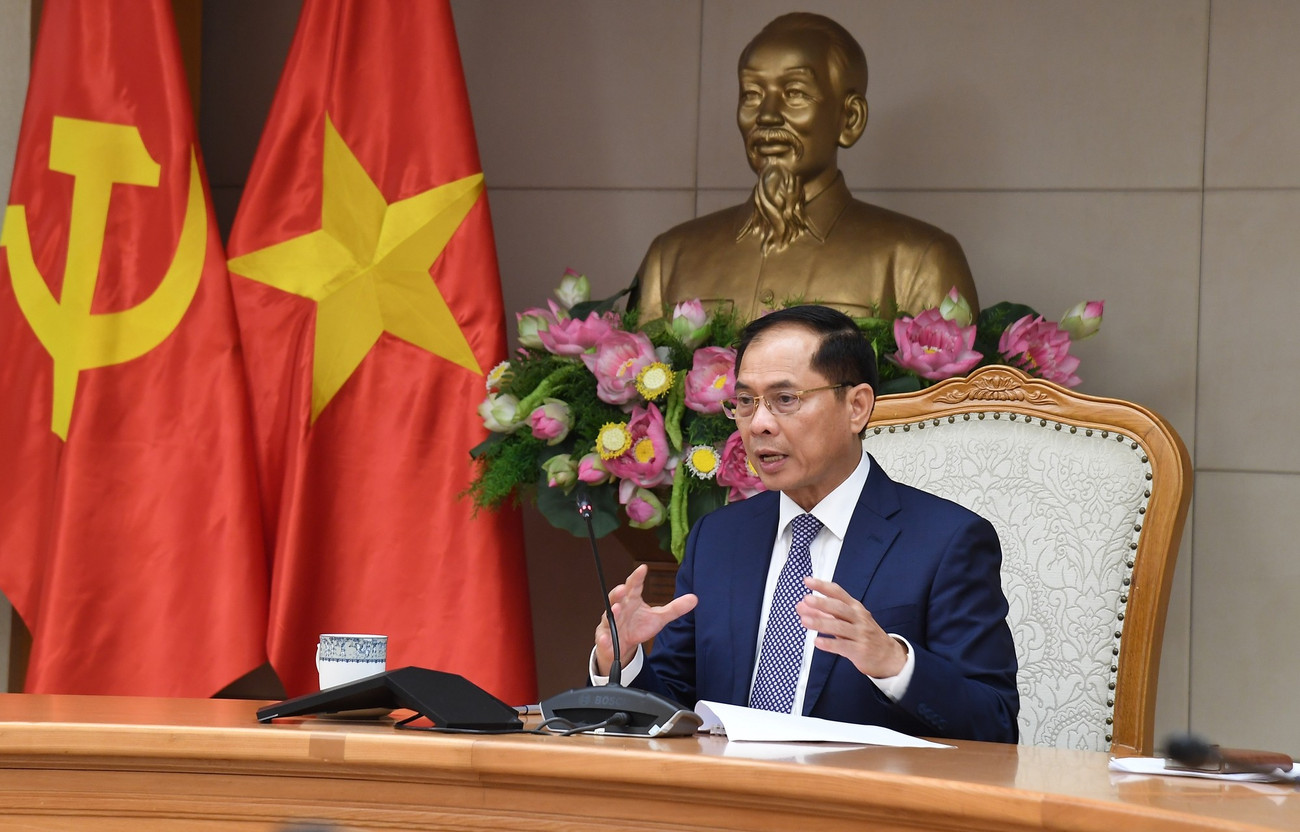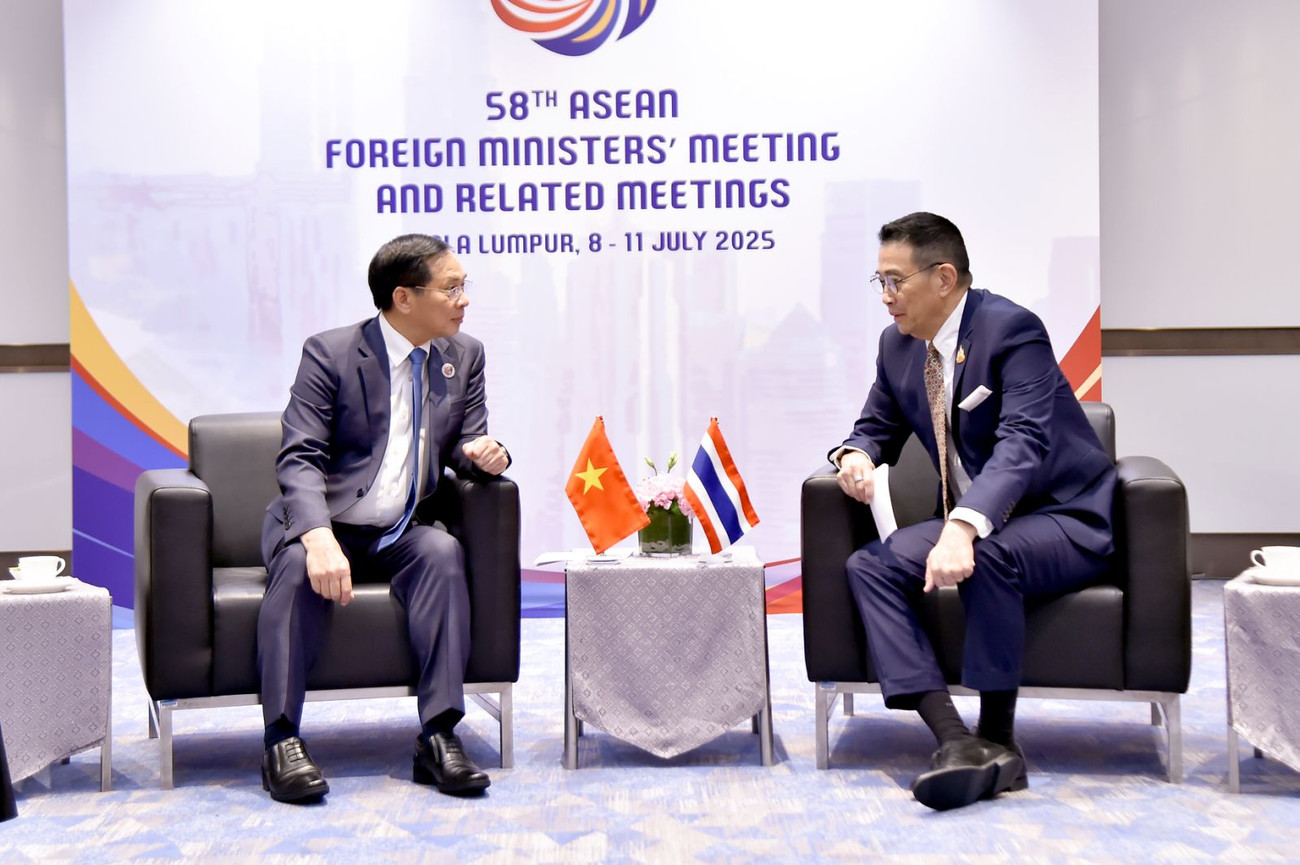MOIT VIETNAM | Vietnam and Laos Call for Special Mechanisms to Match Their Special Relationship
/ News / Activities
Vietnam and Laos Call for Special Mechanisms to Match Their Special Relationship
On the afternoon of January 9 in Vientiane, Prime Minister of Vietnam Phạm Minh Chính and Prime Minister of Laos Sonexay Siphandone co-chaired the 2025 Vietnam–Laos Investment Cooperation Conference under the theme “Promoting Joint Sustainable Growth and Shared Prosperity.”
The high-level event, which welcomed Deputy Prime Minister and Minister of Foreign Affairs Bùi Thanh Sơn, senior officials from ministries and agencies, as well as leading enterprises from both nations, was more than a diplomatic gathering. It was a strong declaration at the start of the new year: both governments are determined to elevate their already close partnership into a new era of depth, breadth, and strategic vision.
.jpg)
The conference immediately followed the 47th meeting of the Vietnam–Laos Intergovernmental Committee, where both Prime Ministers had already mapped out a roadmap for deeper investment ties. Against that backdrop, the gathering in Vientiane was designed not only to review past achievements but also to identify new opportunities and chart a way forward.
Lao Minister of Planning and Investment Phet Phomphiphak introduced the investment climate and unveiled new policy incentives aimed at attracting foreign capital, while his Vietnamese counterpart, Minister Nguyễn Chí Dũng, outlined both the successes and shortcomings of bilateral projects. His message was clear: although progress has been made, much more needs to be done to unlock the full potential of this unique partnership.
Business executives brought practical perspectives to the table. Representatives of Vietnamese enterprises expressed interest in Laos’s abundant resources—potash salt, bauxite, and agricultural potential—while also pointing to rising opportunities in aviation and logistics. Yet they did not shy away from highlighting barriers: slow administrative processes, regulatory inconsistencies, and limited infrastructure. Their proposals underscored the importance of practical reforms to complement political commitments.
Laos’s Economic Recovery and Policy Commitment
Prime Minister Sonexay Siphandone struck an optimistic tone, crediting Vietnamese investors for their meaningful contributions to Laos’s development. He emphasized that Vietnam is not just another partner but a trusted friend whose investments have left tangible imprints on the country’s progress.
Laos, he noted, has recently turned a corner. In 2024, the country’s GDP grew by 4.6%, inflationary and exchange rate pressures eased, and both the state budget and trade balance reported surpluses—rare achievements in today’s uncertain global economy. Tourism surged, adding fresh momentum. These positive indicators, the Prime Minister argued, prove that Laos is well-positioned to welcome more foreign investment, especially from Vietnam.
But Sonexay also acknowledged that recovery must be sustained by structural improvements. He pledged that Laos would prioritize transport connectivity and logistics corridors—linking road and rail networks to Vietnam and developing the Vũng Áng seaport cluster. Aviation was highlighted as another area ripe for expansion, both for passenger flows and for strengthening Laos’s role as a transit hub.
Expanding Cooperation into New Frontiers
The Lao Prime Minister encouraged Vietnam’s private sector to think beyond traditional industries. He suggested replicating Vietnam’s successful Vietnam–Singapore Industrial Park (VSIP) model on Lao soil, creating industrial clusters that not only generate jobs but also allow deeper processing of local resources. Clean energy—particularly wind and other renewables—was flagged as another promising area, fitting seamlessly with Laos’s long-term vision of becoming the “battery of Southeast Asia.”
.jpg)
Importantly, Sonexay urged that new investments must align with sustainable principles. This means respecting environmental limits, using land efficiently, and applying cutting-edge technologies such as artificial intelligence and automation. He linked sustainability with social responsibility, reminding investors that long-term success depends on training and empowering Lao workers with advanced skills.
Prime Minister Phạm Minh Chính built upon his counterpart’s remarks, emphasizing that the Vietnam–Laos relationship is unlike any other. “A special relationship requires special mechanisms and special treatment—from heart to heart. Helping our friends is helping ourselves. What comes from the heart will touch the heart,” he declared.
Chính’s words reflected a deep political and emotional foundation. He framed investment not as a mere commercial pursuit but as an act of solidarity that honors past sacrifices and builds a shared future. He reminded enterprises that when Vietnamese firms succeed in Laos, Vietnam succeeds as well; when Lao companies thrive in Vietnam, Laos also shares the gains. In his view, the prosperity of both nations is inseparable.
Despite the progress, both leaders admitted that current economic ties still fall short of what is possible. They jointly urged ministries, agencies, and provincial authorities to act more decisively in dismantling barriers—whether institutional, legal, or administrative. Tax policies, licensing processes, and border procedures were singled out as areas where faster reform is essential.
Infrastructure stood out as the keystone of future cooperation. Both governments committed to accelerating the Hanoi–Vientiane expressway, the Vũng Áng–Vientiane railway, and expansion of the Vũng Áng port cluster. But the agenda went beyond hard infrastructure. They also underscored the need for integrated supply chains, linking Lao resources with Vietnam’s manufacturing power and global market access.
Looking further ahead, Prime Minister Chính identified new drivers of growth: digital transformation, the green transition, semiconductors, artificial intelligence, cloud computing, photonics, biomedical sciences, and renewable energy. He called on businesses to innovate boldly and governments to nurture a people-centered development model where creativity and knowledge are the ultimate assets.
Toward a Future of Shared Prosperity
In their closing remarks, both leaders stressed that trust, determination, and swift action will be critical to translating words into results. They encouraged enterprises to treat time as a valuable currency, raising obstacles without delay and ensuring that opportunities are never lost to inertia.
Prime Minister Chính concluded with a broader reflection: cooperation between Vietnam and Laos is not only about immediate profits but about strategic, long-term benefits—safeguarding independence, preserving sovereignty, and enhancing the well-being of their peoples. “This partnership,” he affirmed, “is not just about shared interests; it is about a shared destiny.”
With those words, the conference ended not only with commitments on paper but with a renewed sense of historical responsibility. For both nations, the path forward lies in blending tradition with innovation, friendship with strategy, and heart with action.
-
/ News / Activities
Prime Minister Pham Minh Chinh’s Strategic Visit to Laos Marks New Chapter in Bilateral Relations
Prime Minister Pham Minh Chinh’s official visit to the Lao People’s Democratic Republic and his co-chairmanship of the 47th meeting of the Vietnam–...
-
/ News
Deepening Cooperation, Strengthening Regional Unity
On the afternoon of July 28, 2025, at the Government Headquarters in Hanoi, Deputy Prime Minister and Minister of Foreign Affairs of Vietnam, Mr. B...
-
/ News / Activities
Vietnam and Laos Accelerate Toward Deeper Regional Integration and Unprecedented Trade Growth
In an era where regional connectivity and economic resilience are critical pillars for national development, Vietnam and Laos are emerging as a mod...





